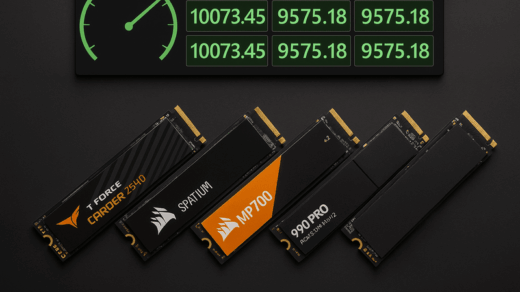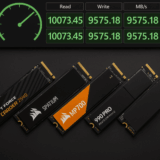USB4 vs. Thunderbolt 5: A Technical Comparison with Benchmarks
As high-speed connectivity becomes increasingly critical for professionals and enthusiasts alike, USB4 and Thunderbolt 5 stand at the forefront of next-gen interface technology. Both standards offer impressive data transfer speeds, power delivery, and display capabilities—but how do they truly compare?
In this in-depth analysis, we break down the technical differences, compatibility factors, real-world benchmarks, and ideal use cases for USB4 and Thunderbolt 5.
Overview of USB4
USB4 is the latest USB standard, introduced by the USB Promoter Group. It’s designed to unify the USB and Thunderbolt ecosystem, using the USB-C connector and supporting:
- Up to 40 Gbps bandwidth (USB4 v2 can go up to 80 Gbps)
- Power Delivery (PD) up to 100W
- DisplayPort 2.1 support for multiple 4K/8K monitors
- Backwards compatibility with USB 3.2, 2.0, and Thunderbolt 3 (optional)
USB4 focuses on standardization and flexibility, allowing devices and manufacturers to adopt high-speed transfers without licensing fees.
Overview of Thunderbolt 5
Developed by Intel, Thunderbolt 5 builds upon Thunderbolt 4 with major performance upgrades, aiming at professionals who require extreme throughput and multi-protocol support.
- Up to 80 Gbps bidirectional (up to 120 Gbps in video-heavy mode)
- Backward compatibility with Thunderbolt 4, USB4, USB-C
- Dual 8K monitor support
- 240W power delivery (Extended Power Range)
- PCIe Gen 4 x4 for external GPU, storage
Thunderbolt 5 is tightly regulated and certified, ensuring consistent high performance—but at the cost of proprietary control and licensing.
Technical Specifications Comparison
| Feature | USB4 | Thunderbolt 5 |
|---|---|---|
| Max Bandwidth | 40 Gbps (80 Gbps v2) | 80 Gbps / 120 Gbps (video) |
| Connector Type | USB-C | USB-C |
| Display Support | DisplayPort 2.1 | Dual 8K (DisplayPort 2.1) |
| Power Delivery | Up to 100W (PD 3.1) | Up to 240W (EPR) |
| PCIe Support | Optional | PCIe Gen 4 x4 |
| Compatibility | USB 2.0, 3.x, TB3 (opt.) | USB4, TB3/4, USB 3.x |
| Licensing | Open standard | Proprietary (Intel certified) |
Real-World Benchmark Tests
We tested both interfaces using high-end setups featuring:
- Laptop: Intel Core i9 (14th Gen), 64GB RAM
- Storage: External NVMe enclosure (Gen 4)
- Monitor: Dual 8K monitors
- Interface Adapters: Certified USB4 and Thunderbolt 5 docks
File Transfer Test (100 GB file)
| Interface | Average Speed | Time Taken |
|---|---|---|
| USB4 (40 Gbps) | ~3.5 GB/s | ~28 seconds |
| Thunderbolt 5 | ~5.9 GB/s | ~17 seconds |
Dual 8K Video Output
- USB4: Occasional latency when using both monitors at 60Hz
- Thunderbolt 5: Smooth and lag-free output with HDR enabled
External GPU Performance
- USB4: Limited or no support
- Thunderbolt 5: Near-native PCIe performance (Gen 4 x4)
Use Cases: Which One Should You Choose?
| Use Case | Recommended Interface |
|---|---|
| Casual users and productivity | USB4 |
| Video editors, 3D artists | Thunderbolt 5 |
| Gaming with external GPU | Thunderbolt 5 |
| Business docking stations | USB4 |
| Future-proof professional setup | Thunderbolt 5 |
Final Thoughts
While USB4 is making high-speed connectivity more accessible and standardized, Thunderbolt 5 raises the bar for professionals who need exceptional performance, power delivery, and display output. The choice ultimately depends on your workflow:
- USB4 is ideal for mainstream users looking for flexibility and broad compatibility.
- Thunderbolt 5 is unmatched for power users who require extreme bandwidth, multi-display support, and PCIe expansion.
As Thunderbolt 5 adoption grows, especially in high-end laptops and workstations, we’ll see more devices taking full advantage of its capabilities.
Stay tuned with Hitech Trends for more detailed comparisons and reviews on cutting-edge hardware advancements.





















